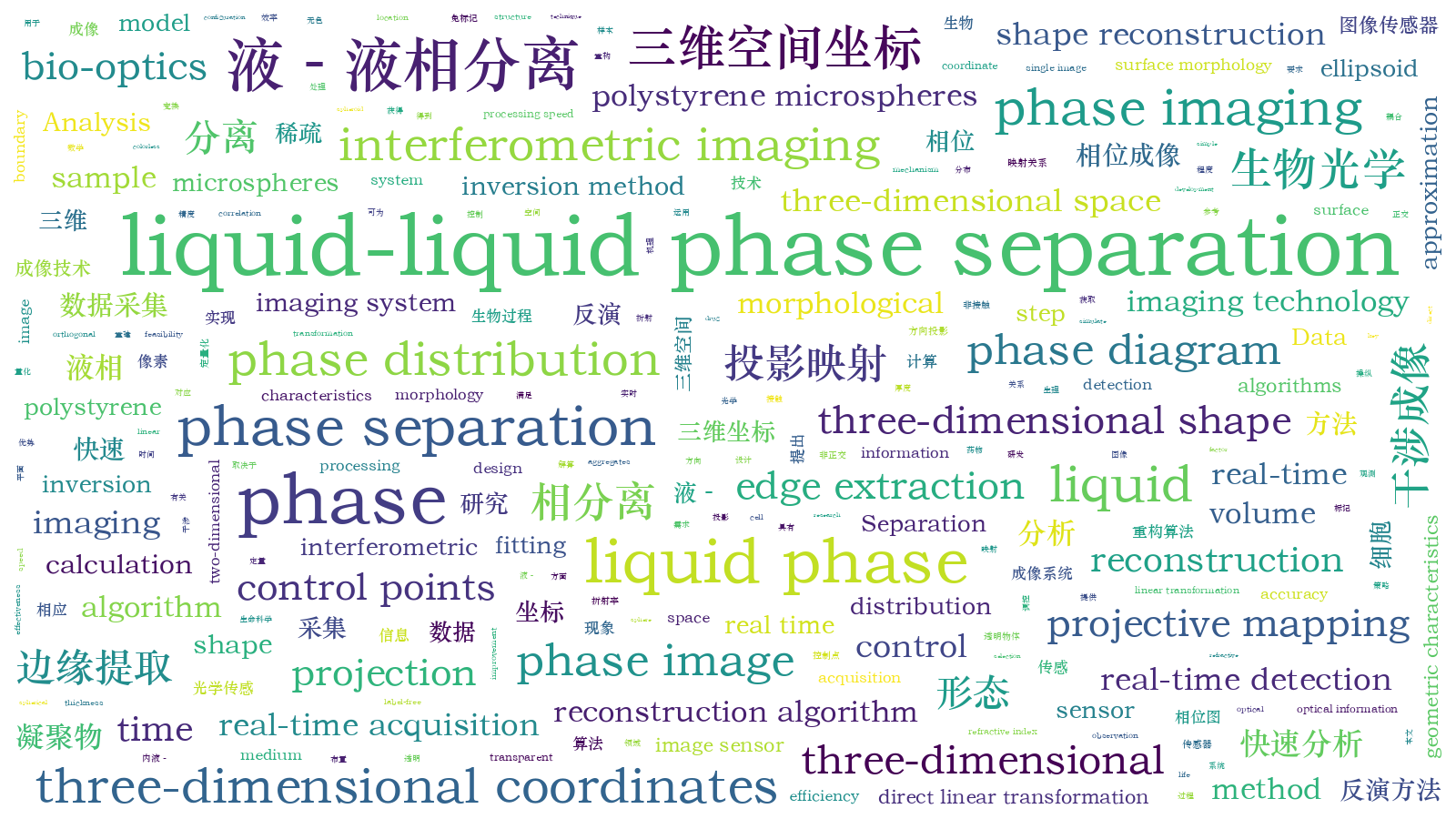基于稀疏数据的液‑液相分离凝聚物形态快速分析方法
Intracellular liquid-liquid phase separation is related to various biological processes in cells. Analysis of the phenomenon and the phase separation mechanism can provide a reference and strategy for regulating cell physiological processes and drug development. Phase imaging technology is used in the study of liquid-liquid phase separation because it is highly advantageous for contactless and label-free quantitative observation of colorless transparent objects. However, in this technique, the sample thickness is coupled to its refractive index, and the morphological distribution must be inverted using the corresponding algorithm. The efficiency of the analysis depends largely on the amount of data acquired, time required for calculation and processing, and accuracy. To meet the demand for the real-time acquisition of morphological information of phase-separated condensates in the field of life science research, this study proposes a fast inversion method for three-dimensional morphology using only two phase images and a design of an interferometric phase imaging system with dual optical information acquisition using a single image sensor.
A method for the morphological analysis of liquid-liquid phase separation aggregates is proposed in this paper. The first step in this method is to use a single sensor based on interferometric phase imaging technology to collect two sample phase distribution maps incident in the nonorthogonal directions. The second step is to extract the edges of these phase images. The boundary point coordinates of the agglomerate substructure on the projection surface were detected point-by-point according to the pixel points of each phase image to obtain the structural contours of the sample projection on the two imaging surfaces. The next step is to select and arrange the obtained control points using approximation fitting based on the geometric characteristics of the phase volume. A direct linear transformation was used to select the control points to solve the quantitative relationship between the spatial and projection plane coordinates. Based on this correlation, the corresponding three-dimensional coordinates in the same spatial coordinate system were calculated from the two-dimensional coordinates of the undetermined points. Thus, the three-dimensional shape reconstruction of the phase volume was realized.
To elaborate the principles and steps of the algorithm, this study uses the nucleus model as an example to extract the surface morphology of the liquid-liquid phase separation condensate, such as the internal nucleolus, and establishes a two-medium concentric ellipsoid model (Fig. 2) to simulate the internal structure of the nucleus and design polystyrene microspheres[Fig. 7 (c)]. This reconstruction algorithm yielded better reconstruction results for the two-medium concentric ellipsoid model and polystyrene microspheres [Figs. 6 and 7 (d)]. The reconstruction of the sphere and ellipsoid demonstrated the effectiveness of the algorithm for different feature surfaces and the time efficiency of inversion calculation (Table 2). The processing speed satisfied the requirements of real-time analysis. The rapid reconstruction of the polystyrene microspheres also shows the feasibility of first extracting the relationship between the corresponding projection pixels based on two non-orthogonal phase maps and then quickly inverting the three-dimensional shape of the sample.
A method for the morphological analysis of liquid-liquid phase separation condensates was proposed. A single sensor was used to obtain the phase distribution diagrams of the two samples based on interferometric phase imaging technology. The boundary point coordinates of the condensate substructure on the projection plane were detected point-by-point based on the pixel points of the phase diagram, and the structural contours of the sample projection on the two imaging planes were obtained. Based on the geometric characteristics of the phase volume, the control points were selected and arranged using approximation fitting, and a mapping relationship between the three-dimensional space coordinates and the corresponding plane projection coordinates was established. Subsequently, the three-dimensional space coordinates of the phase volume were obtained through plane projection coordinate inversion, and a three-dimensional shape reconstruction of the phase volume was realized. The proposed morphological analysis method only needs to collect two phase diagrams, which requires a calculation time of approximately 0.05 s, which can provide a reference for the real-time detection of transparent objects such as liquid-liquid phase separation. It should be noted that this algorithm is simple and rapid. For the liquid-liquid phase separation of such spherical or spheroid phase bodies, the three-dimensional shape can be efficiently inverted in real time, but the reconstruction of irregular phase bodies still requires improvement in terms of calculation accuracy. The selection of control points to establish two-dimensional-three-dimensional mapping is a key factor. In the future, machine-learning algorithms can be considered to determine their coordinates and numbers. To address the difficulty in selecting control points under experimental conditions, this study proposes an operation scheme for the fitting approximation. The configuration of the appropriate number and location of control points for different feature samples under experimental conditions, according to different detection requirements, is a problem that we are currently exploring.
贾希宇, 龚凌冉, 徐媛媛, 季颖. 基于稀疏数据的液‑液相分离凝聚物形态快速分析方法[J]. 中国激光, 2023, 50(9): 0907401. Xiyu Jia, Lingran Gong, Yuanyuan Xu, Ying Ji. Rapid Analysis Method for Liquid‐Liquid Phase Separation Condensate Morphology Based on Sparse Data[J]. Chinese Journal of Lasers, 2023, 50(9): 0907401.







